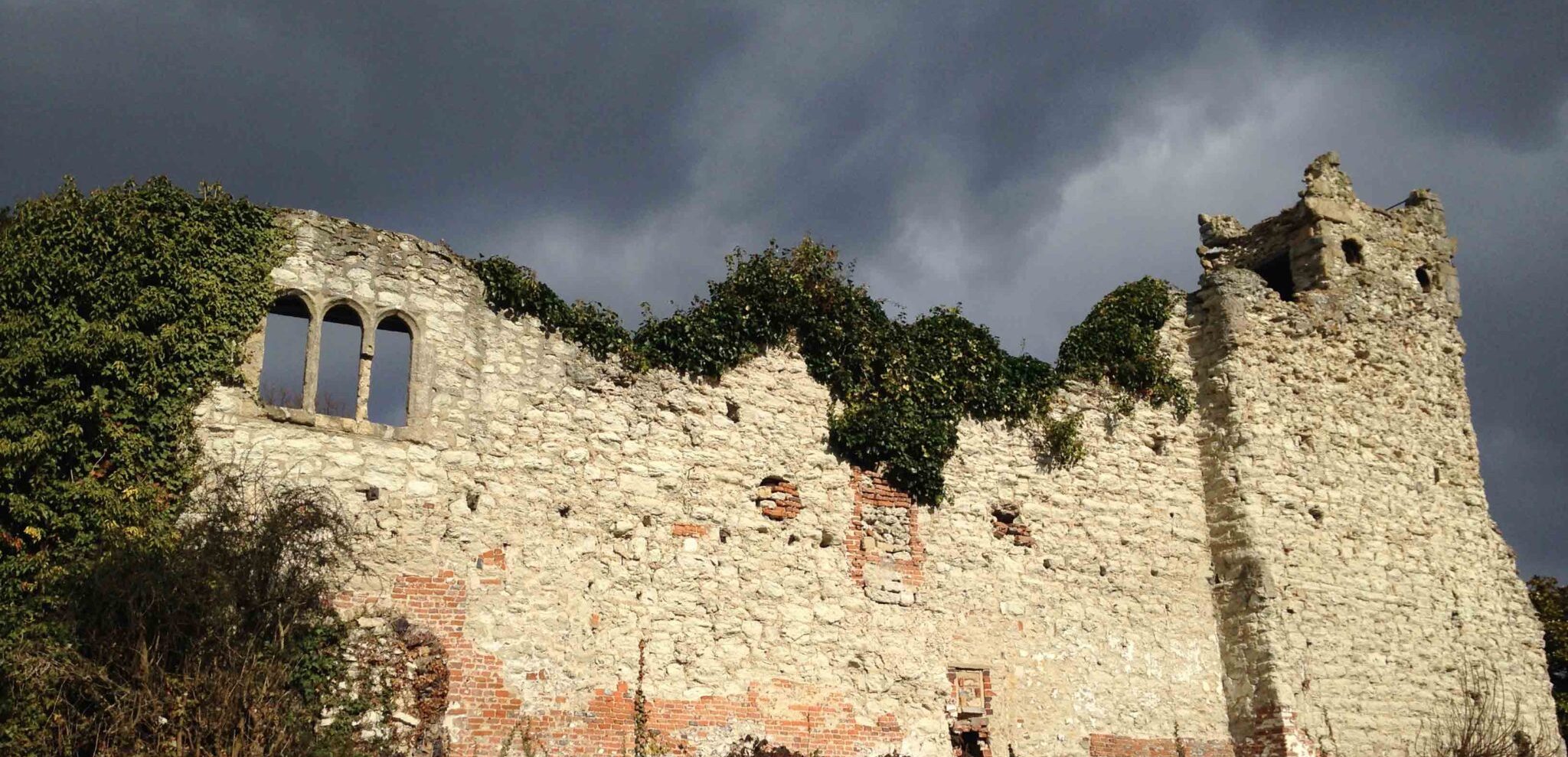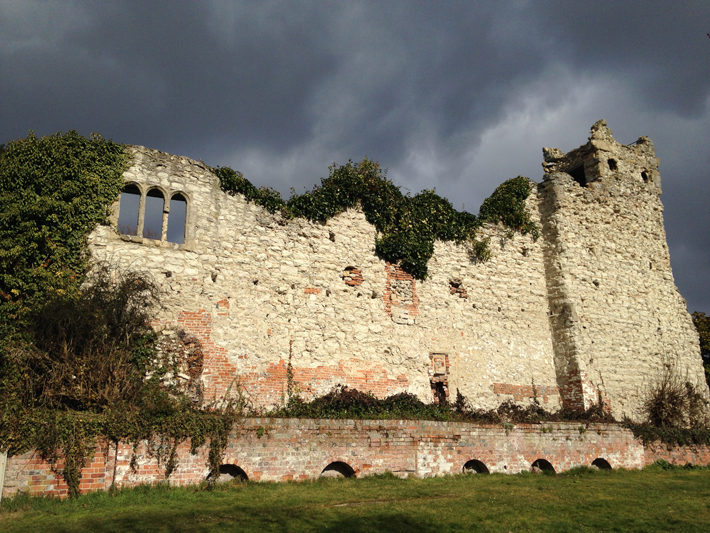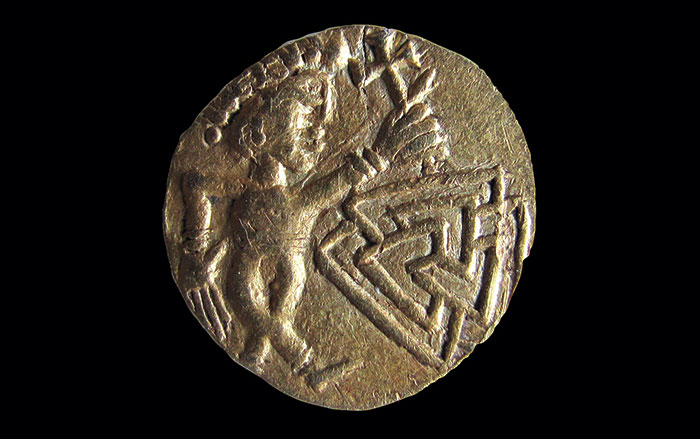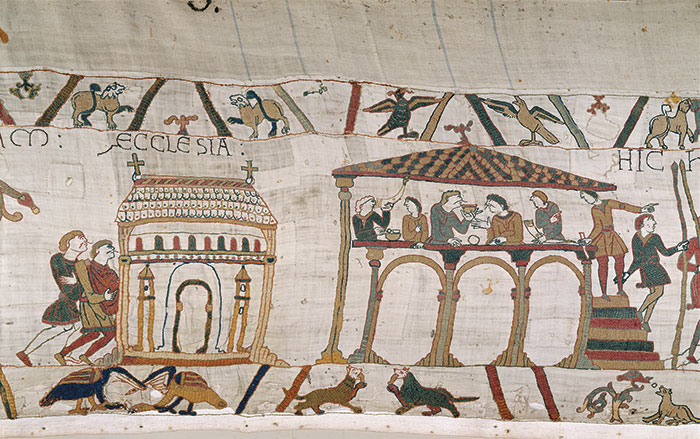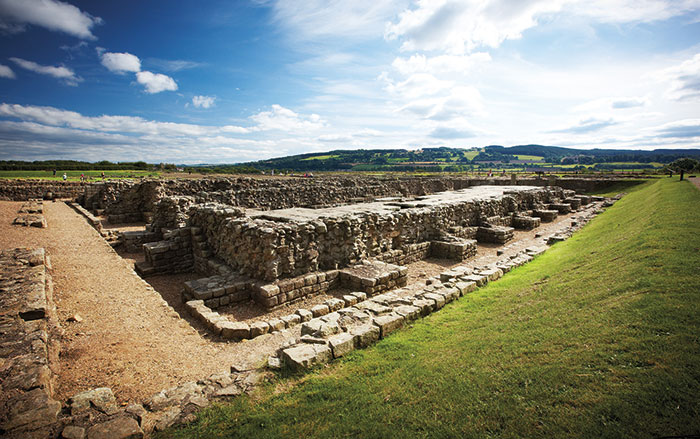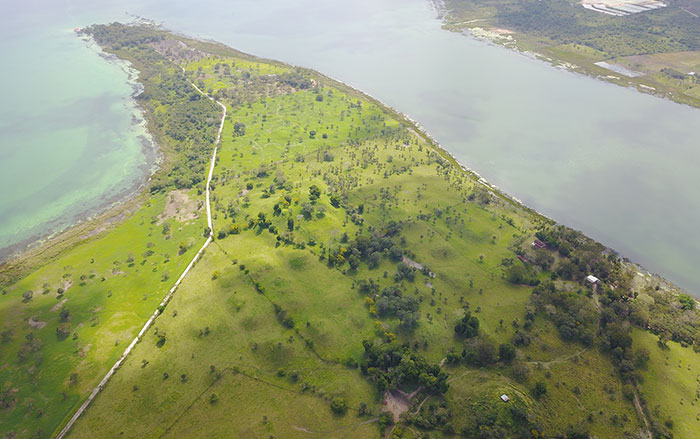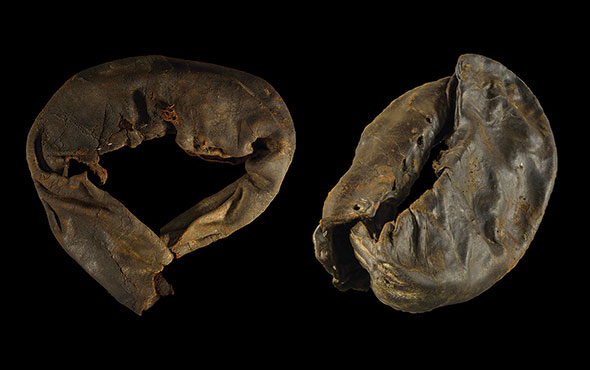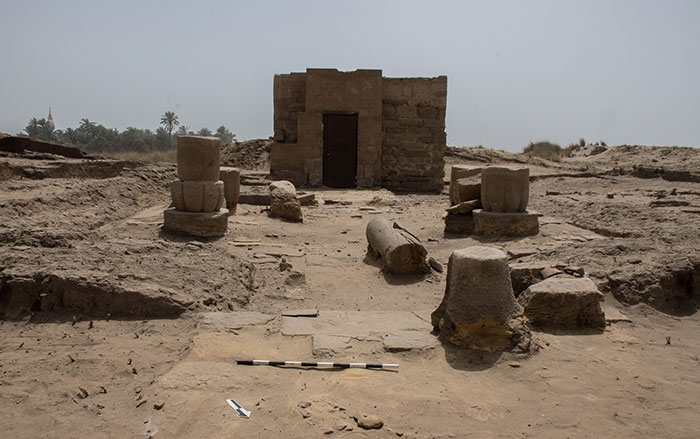
Some 20 miles downriver of Oxford and an arrow shot from the eastern bank of the Thames rise the limestone ruins of Wallingford Castle, a massive fortress built following the Norman invasion of England in 1066. Led by the newly crowned William the Conqueror, the Normans—descended from Norsemen who had settled in northern France in the tenth century—built castles in large numbers throughout England to control lands they had seized from the Anglo-Saxons. Along with Oxford and Windsor Castles, Wallingford was one of the most significant of these early Norman fortresses. And, in less than a century, the castle became the epicenter of one of the most momentous conflicts in English history. When William’s son King Henry I died in 1135, his rightful heir was his daughter, Empress Matilda. But her cousin, Stephen of Blois, also a grandchild of William the Conqueror, snatched the throne from under her nose. Matilda then launched an all-out campaign to win back the crown, plunging the country into a civil war that lasted almost 20 years.
In response to the crisis, nobles built still more castles, and rivals to the king set up their own mints and produced new coinage. Churches were fortified and the peasantry suffered deprivation as armies crisscrossed the country, ravaging estates and burning property. A contemporary chronicle describes King Stephen’s reign as “nineteen long winters” when “Christ and his Saints slept.” Victorian historian William Stubbs described the period as the “Anarchy,” a term that stuck.
But was the Anarchy really as horrific as contemporary histories and later scholars made it out to be? Over the last seven years, University of Exeter archaeologist Oliver Creighton has led a team that has followed in the footsteps of Stephen’s forces across England. They have explored 12 of the war’s most significant locations and used archaeological techniques to assess the upheaval brought about by the Anarchy. “This was a period that experienced major political turbulence and an upsurge in fortification building,” says Creighton. “Most of what we know about the period is through historical documents. We wanted to afford a new perspective by using the full range of archaeological data, from portable artifacts through sites such as castles and settlements, and even the evidence of the landscape itself.”
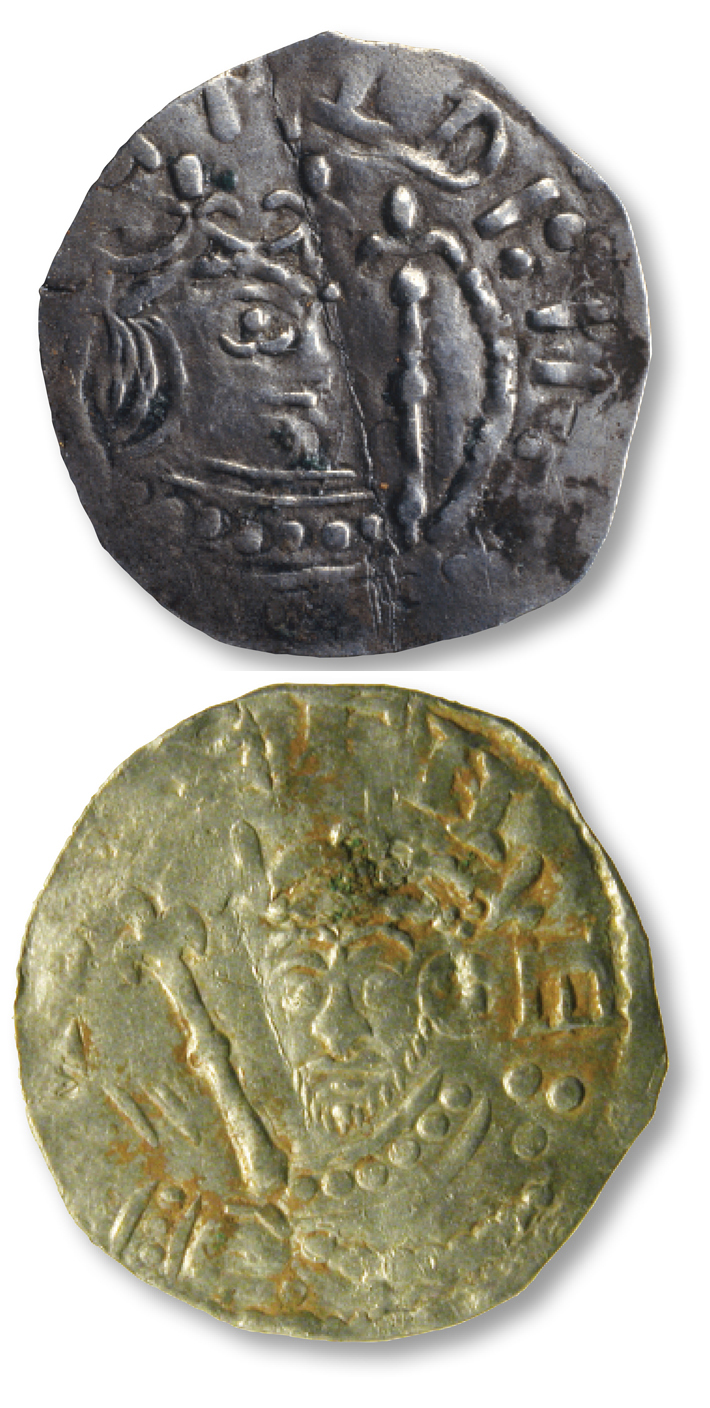
One avenue of their research relies on the tendency of people to bury coins in times of strife to keep their fortunes safe. Although most such coin hoards are likely to have been successfully retrieved, the forgotten and lost ones that are recovered by archaeologists and metal detectorists centuries later can serve as an indicator of how turbulent times were. “Hoarding provides a barometer of public fear, with fewer hoards deposited during peaceful periods,” says Creighton. The number and distribution of coin hoards he and his colleagues have found show that Stephen’s reign appears to have been a particularly insecure time. They see a huge spike in the number of hoards buried in lands in the rebellious areas of western Britain, going from just a few hoards per decade up to more than 10 per decade during Stephen’s reign. This may indicate that people in the region felt jittery and were more inclined to bury their fortunes, or perhaps it reflects the chaos of the time, with people more likely to be killed or displaced and unable to return. Interestingly, Creighton’s team also discovered that far fewer hoards from this period have been unearthed in the royalist southeast, hinting that a more peaceful atmosphere prevailed in this area and suggesting that only parts of the country were caught in the grip of political instability.
While the coin hoards and some of the team’s other results have uncovered deep scars left on the landscape by this period of turmoil, other results paint a more nuanced picture of what it was like to live through these troubled times. In particular, the mighty Norman castles and the newer “counter castles” rising around the country during these two decades offer a look into how the rise of siege warfare during the Anarchy began to change the nature of medieval conflict. Investigation of these fortresses shows how commanders sought to avoid large-scale clashes of arms and relied more on long-term standoffs that could be resolved through political negotiation, a strategy at odds with the imagery of an utterly anarchic period in history.
Even though the majority of the stonework at Wallingford Castle has long since been pillaged, the sheer volume of earthworks remaining gives a strong sense of how imposing the castle would have been. Covering an area of more than 26 acres, the structure was protected by the stone walls of its inner and outer baileys, or courtyards, each paired with a vast water-filled ditch. These ditches, which in Stephen’s day would have been 20 feet deep, still demarcate the area today, and their path reveals the circuitous entrance route that would have led to a huge fortified gatehouse. At the center of the complex lies a massive motte, or raised earthwork, measuring 40 feet high and 200 feet across—a backbreaking amount of soil to have shifted by hand. A small plateau at the top of the motte still offers a commanding view of the surrounding landscape. During the twelfth century, this vantage point allowed Wallingford Castle to control a nearby bridge and ford across the Thames that served as the sole gateway to the strategically vital upper Thames region, which was the heartland of English kingship. After conflict broke out between Stephen and Matilda, the castle became a crucial stronghold. Unfortunately for Stephen, Wallingford was held by Brien fitz Count, a firm supporter of Empress Matilda.
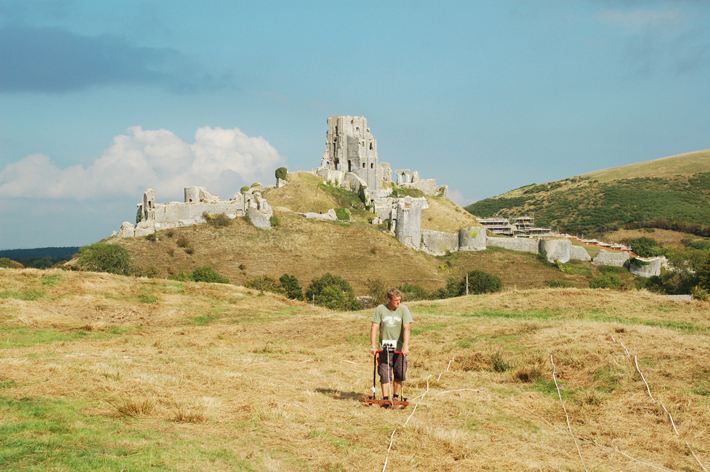
In fact, Wallingford Castle became a vital refuge for Matilda. She fled here in the winter of 1142, after a dramatic nighttime escape from the besieged Oxford Castle. More than 70 years after the event, the monk and chronicler Matthew Paris wrote a—possibly fanciful—account of her journey to Wallingford, saying, “With womanly guile, when the Thames was frozen and white with snow, clad in white cloaks she and several companions escaped secretly by night from the castle through a postern, unseen by sentries or patrols because of similarity between the white of the snow and their clothes. Thus she fled unseen that night to Brien fitz Count at Wallingford Castle to save herself from the enemy.”
Because of its strategic location, Wallingford was in an almost constant state of siege for 14 years, from 1139 to 1153. For the local population, life during this time was harsh. “People farming outside the town walls would have been constantly vulnerable to having their crops and goods taken to feed the soldiers of either of the warring sides,” says Judy Dewey, a local historian and curator of Wallingford Museum.
However, life inside the castle wasn’t bad and, throughout the period, its strong walls stood firm. “When Stephen first attacked in 1139 he intended to besiege the castle, because the walls were impregnable,” says local historian Philip Burton. “But he soon discovered that fitz Count had supplies to last several years, so Stephen had to change tack and decided to erect counter castles to try to control the roads into Wallingford.”
There are no obvious signs of Stephen’s counter castles today, but one of them is described in the twelfth-century text of the Gesta Stephani (“The Deeds of Stephen”) as being located on the other side of the river, directly opposite Wallingford Castle. In 2011, the construction of a new housing development there provided an opportunity to explore the site.
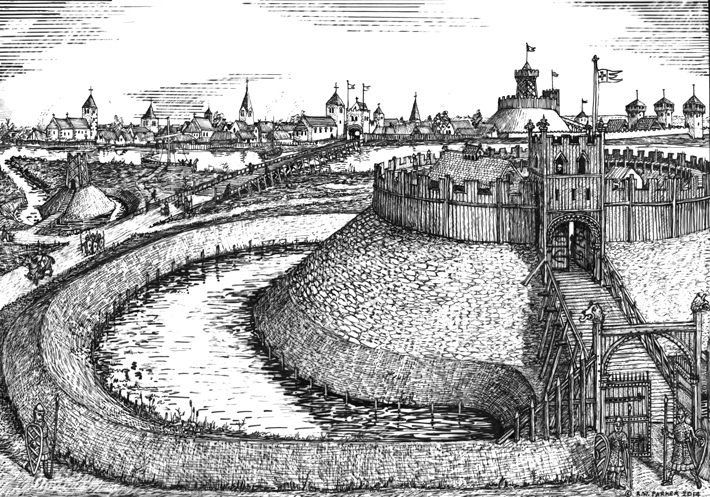
While a commercial archaeological team dug 13 trenches and carried out large-scale mapping and recording, Creighton and his team conducted geophysical and magnetometer surveys. They quickly established that this was the location of Stephen’s Crowmarsh Castle, described in Gesta Stephani as being built “within sight” of the town of Wallingford and as a “work of wondrous toil and skill.” The excavations revealed an oval enclosure around 115 feet across, surrounded by a truncated embankment and an 80-foot-wide ditch. Unlike Wallingford’s traditional motte-and-bailey castle on the other side of the river, Crowmarsh was likely a ringwork castle: a wooden castle defended by a bank and ditch that surrounded it. Positioned close by Wallingford Bridge, the castle enabled King Stephen’s archers to have complete command over the road approaching the bridge. “Although the site of Crowmarsh Castle was inferior to that of Wallingford, it would have been immensely irritating because of its ability to control the road,” says Dewey.
At the bottom of the ditch, archaeologists recovered significant quantities of Anarchy-period pottery, providing interesting detail about everyday life at the castle. One thing that immediately stood out was the exceedingly high proportion of jugs and pitchers in the assemblage. “This suggested a style of consumption more akin to a high-status manorial site,” says Creighton.
Documentary sources back up the archaeological evidence for the period’s rather languid style of warfare. Despite there being three main sieges (1139–1140, 1146, and 1152–1153) and pretty much continuous military presence for more than 14 years, there was surprisingly little bloodshed. There are no records of King Stephen ever trying to storm Wallingford Castle, and the closest he came to direct assault was when he took control of the bridge in 1152. The only really gory moment was when 60 royal archers were beheaded by Empress Matilda’s supporters. “The siege castles were primarily employed in chess-like power plays and shows of posturing, force, and resolve,” explains Creighton.
Intimidation was the name of the game, as suggested by the significant number of high-status military items found at the bottom of the Crowmarsh Castle ditch during excavations. Horse fittings, knives, and dress ornaments all provide evidence of a knightly presence at the fortress. “Whether the mounted knights were there to prevent raiding parties or more as a show of force is hard to say,” says Creighton. During the 1130s and 1140s, the image of the mounted knight was beginning to crystalize as jousting tournaments, which tended to flourish during periods of weak rule, first became popular. Knights also began using dramatic coats of arms during this time, but the great irony was that because the era was dominated by siege warfare, they actually played a limited role in the conflict.
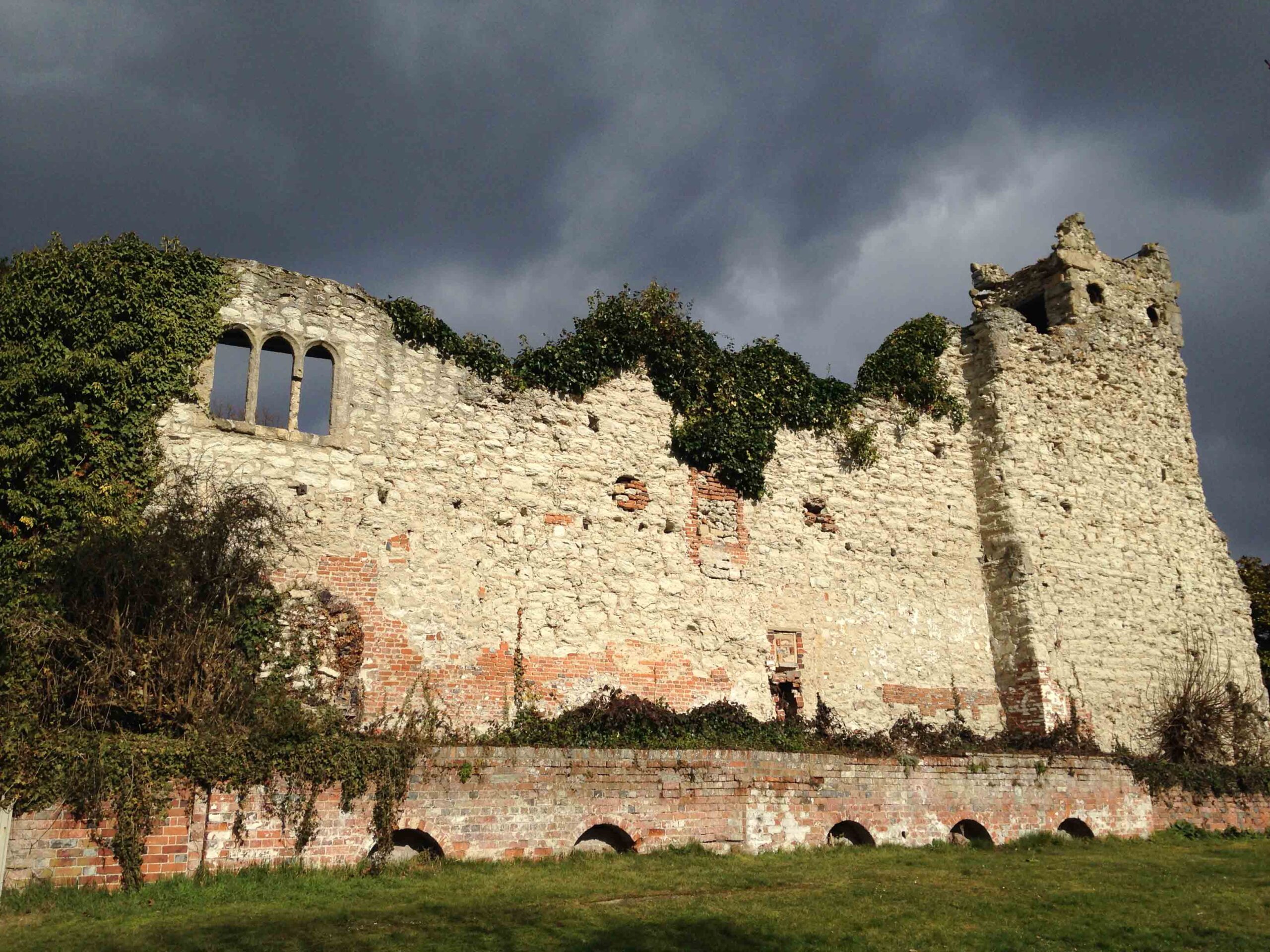
The same stalemate that existed between Crowmarsh and Wallingford Castles played out wherever nobles saw the Anarchy as an opportunity to improve their own standing. Safe inside their strong stone castles, they would undermine King Stephen as they minted their own coins and stirred up rebellion. Stephen’s response was to hastily throw up siege castles and cut off supplies to starve out the unruly barons and earls.
Baldwin de Redvers, Lord of Plympton, was one of these disenfranchised aristocrats who saw there were personal advantages to be gained by backing Empress Matilda. In 1136, he seized Exeter Castle on her behalf, helping her to maintain her stronghold in the southwest. Emboldened by his success, he continued to throw his weight around. By 1139, Stephen decided it was time to take de Redvers in hand, and managed to blockade him into Corfe Castle in Dorset by building a siege castle nearby. In 2013 and 2014, Creighton and his team carried out a geophysical survey at a spot on a low crest opposite the imposing hill where Corfe Castle stands. Well-defined ridges on the ground there revealed themselves to be clear traces of Stephen’s twelfth-century ringwork siege castle. “It was clearly built to blockade, intimidate, and observe,” says Creighton. Unfortunately for Stephen, the protracted siege didn’t work on this occasion, and de Redvers went on to be rewarded for his rebellion, with Matilda appointing him the 1st Earl of Devon in 1141.
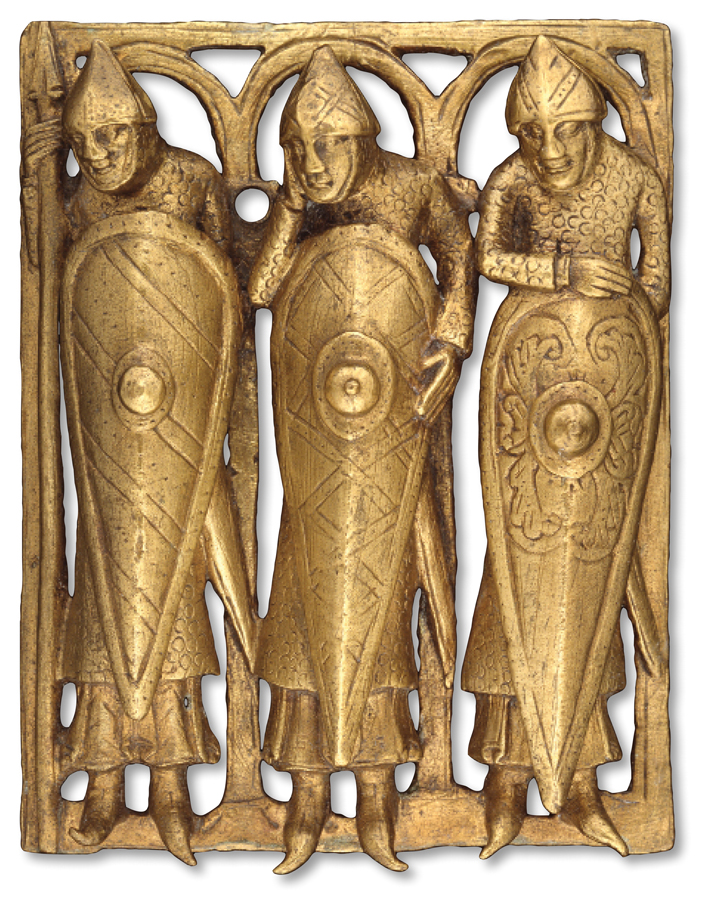
Over in the east of the country, Geoffrey de Mandeville, Earl of Essex, was another thorn in Stephen’s side. “He was an absolute scoundrel who was constantly changing his allegiance,” says Creighton. His land holdings included a number of castles in strategic locations around the city of London, and he used these as leverage to play Stephen and Matilda against each other. But things came to a head in 1143 when Stephen recognized what a liability de Mandeville could be and had him arrested, forcing him to relinquish a number of his castles and the Tower of London (where he was constable) in return for his life and liberty. For de Mandeville the battle lines were now clearly drawn, and he soon headed to the Isle of Ely, situated in the Fenlands of eastern England. There he quickly established his power, expelling the monks from the island’s Ramsey Abbey, plundering and burning churches in Cambridge, and securing bases on the causeways leading to the Isle.
The consequences of de Mandeville’s campaign, in this then marginal farming area, were brutal, according to the twelfth-century Ely Abbey chronicle, Liber Eliensis:
For twenty or thirty miles there was no ox, no ploughman to be found tilling the smallest piece of land. One could scarcely buy the tiniest measure [of corn] for two hundred pence, and, so great was the human disaster that followed from the scarcity of bread that, throughout the lanes and streets, people lay dead in hundreds and thousands, swollen like [wine] skins, and their corpses were left unburied for the wild beasts and birds.
Soon Stephen headed to the Fens to quash de Mandeville. Written sources reveal that Stephen constructed a number of fortifications around the fens’ edge, in order to try to restrict de Mandeville’s movements. One of these fortifications was a castle situated in the small village of Burwell, which at that time sat at the water’s edge, looking over to the Isle of Ely.
A raised rectangular earthwork platform there, measuring 100 by 200 feet and surrounded by a 20-foot-deep ditch, indicates where the castle once stood. During the 1930s, archaeological excavations at the site uncovered stone foundations indicating that this was a substantial castle and that it probably had a stone defensive wall and tower. “This was clearly not a hastily built and expedient earth-and-timber siegework, but something grander and more defensible,” says Creighton. In 2014, Creighton and his colleagues carried out a topographic and geophysical survey of the area. Their findings suggest that Stephen never finished building this hefty castle. The survey revealed a series of large irregular mounds that were spoil heaps from ditch excavation and that the ditches themselves were only partially dug. The spoil heaps overlook the castle platform, and would most likely have been intended to be removed at a later date. “It demonstrates that the castle building at Burwell ceased before completion,” says Creighton. Instead, it appears that Stephen’s need for Burwell Castle evaporated in 1144 when de Mandeville was mortally wounded by an arrow to the head, fired by one of Stephen’s archers.
Using geophysics to peer deeper underground, Creighton and his team were also able to answer the perplexing question of why this castle was built from stone, when most of Stephen’s other castles were hastily erected wooden affairs. Just north of the castle’s ditch, a series of linear anomalies were identified. The distinctive layout of the anomalies—outlining a rectangular structure with an internal subdivision—bear close resemblance to Romano-British temples. Together with the large volumes of Roman material uncovered in the 1930s, this geophysical evidence suggests that Stephen’s castle was in fact an adaptation and repurposing of existing structures, including a Roman temple and an Anglo-Saxon noble residence. The discovery shows that the form of Anarchy-period castles varied greatly across the country.
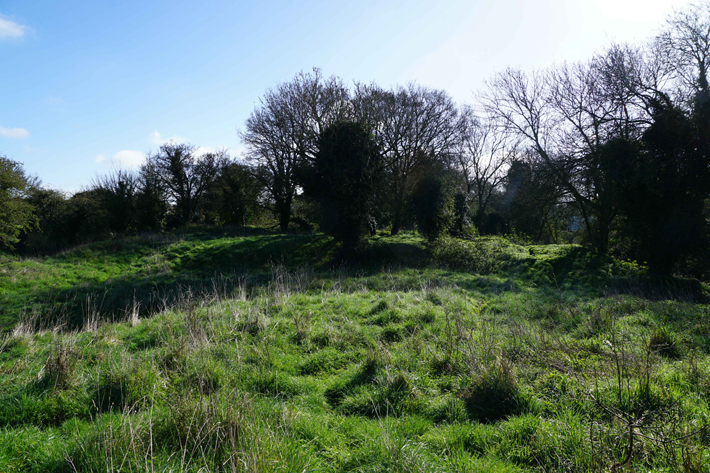
As contemporary chronicles such as the Liber Eliensis suggest, the Anarchy was without a doubt devastating for many people, but the turmoil was not evenly distributed across the country, and for some people life carried on pretty much as normal. And even in the areas where the fighting was most intense there were rarely full-scale battles. Instead the war was waged using cat-and-mouse-style tactics, with sieges, raids, ambushes, and scorched-earth policies all favored by commanders. “Anarchy is a freighted term that is grounded more in the supposed order of the later periods and projects a lot of assumptions backward,” says University of Wisconsin medieval historian Karl Shoemaker. “Creighton’s research confirms that the level of disorder and violence was probably not more than the levels contemporaries usually expected.”
It could even be argued that the long, drawn-out style of psychological warfare may have eased the path to peace. “Siege warfare could put attackers and defenders within sight, and sometimes earshot, of one another over many weeks, months, or even years,” says Creighton. “And, as we have seen, siege castles presented opportunities for demonstrating resolve, for displaying and threatening hostages, and for serving as platforms for parley.”
In fact, it was ultimately a failed siege of Wallingford Castle in 1152 that precipitated the end of the conflict. The next year, the castle was the site of peace negotiations between Stephen and Empress Matilda’s son, who later became King Henry II. Stephen agreed to a truce, and promised to “raze to the ground the castle that was the seed-bed of war,” i.e., Crowmarsh Castle. Creighton says that material found during the excavation of the castle’s ditch—a mix of soil, chalk blocks, and charcoal and burned daub—fits with the documented razing of Crowmarsh Castle. Unearthing evidence for the negotiated destruction of Crowmarsh Castle reinforces Creighton’s conclusion that the mid-twelfth century is best understood not as an age of anarchy, but an age of transition.


